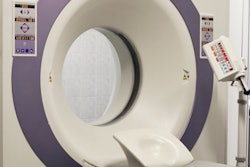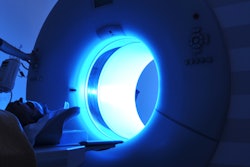A generative adversarial network (GAN)-based noncontrast CT angiography (CTA) system has promise in vascular diagnosis, suggest research findings published November 14 in Radiology.
A team led by Jinhao Lyu, MD, from the Chinese PLA General Hospital in Beijing found that the synthetic images produced by their system were comparable to real CTA images, which could help assess the aorta and carotid arteries while avoiding risks related to contrast media use.
“With further studies and assessment, this model may provide a fast and low-cost auxiliary CTA-like imaging method for patients, especially those with iodine allergy or limited access to health care,” Lyu and co-authors wrote.
Iodinated contrast agents are widely used in CTA exams. While studies have highlighted the clinical utility of these agents, the researchers noted that they come with risks and drawbacks. These include adverse reactions from allergies, higher cost, and time consumption.
Lyu and colleagues sought to develop and test its noncontrast deep learning GAN model to synthesize CTA-like images. This included evaluating image quality and the diagnostic accuracy of these synthetic images.
The CTA-GAN model includes the following components: a generator designed for CTA-like image synthesis based on noncontrast CT images; a corrector to adapt the CT images to account for error loss; and a discriminator that estimated the probability of the input images being real CTA images versus synthetic images.
The investigators included CT scans from 1,749 patients with a median age of 60 years. Of all patient images, 1,137 were included for training, 400 for validation, and 212 for testing. An external validation set consisted of CT scans from 42 patients with a median age of 67 years.
The researchers found that the synthetic images had high similarity to real CTA images, reporting that the visual quality between the images was comparable on internal test and external validation datasets (p = 0.35 and p > 0.99, respectively).
| Performance of CTA-GAN model | ||
|---|---|---|
| Internal validation | External validation | |
| Normalized mean absolute error | 0.011 | 0.013 |
| Peak signal-to-noise ratio | 32.07 dB | 31.58 dB |
| Structural similarity (compared to real CTA images) | 0.919 | 0.906 |
Lyu et al also found that the synthetic images showed “reasonable to good” diagnostic accuracy for vascular diseases. For the internal test set, this included an accuracy of 94% and a macro F1 score of 91%. The external validation set meanwhile achieved an accuracy of 86% and a macro F1 score of 83%.
The study authors explained that their results show the potential of their CTA-GAN model, as well as noncontrast AI in general, for becoming “an important complement” to iodine-based CTA imaging.
In an accompanying editorial, Ran Zhang, PhD, from the University of Wisconsin-Madison, and Baris Turkbey, MD, from the National Cancer Institute in Bethesda, MD, wrote that this study shows the feasibility of this kind of model for diagnosing vascular diseases.
“There is also potential to expand the scope of the CTA-GAN model developed … to even smaller vessels and include more pathologies,” they added.
However, Zhang and Turkbey also called for “well-curated” clinical datasets for training and validating GAN models.
The full study can be found here.



















